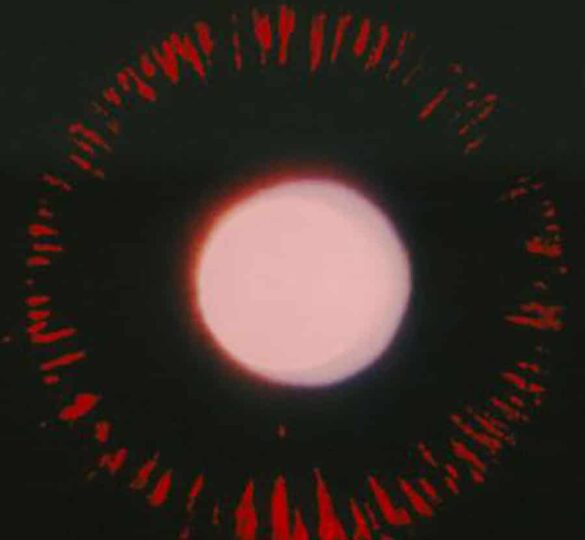Glaucoma pigmentario: respuestas a sus preguntas
El síndrome de dispersión de pigmentos es un factor de riesgo para el desarrollo del glaucoma, y los pacientes que padecen de esta afección deben ser evaluados periódicamente.

¿Qué es el síndrome de dispersión de pigmentos y el glaucoma pigmentario?
El síndrome de dispersión de pigmentos es una afección en la que los pigmentos de la parte posterior del iris (la parte coloreada de los ojos) se desprenden y quedan atrapados en el sistema de drenaje del ojo. Esos pigmentos pueden obstruir el drenaje, lo que podría, a su vez, aumentar la presión del ojo.
Las características del síndrome de dispersión de pigmentos, como la presencia de pigmento excesivo en el drenaje y áreas de pérdida de pigmento en el iris, se pueden detectar durante un examen de los ojos.
El síndrome de dispersión de pigmentos es más frecuente entre los pacientes jóvenes de sexo masculino, de raza blanca, que padecen de miopía. La presión del ojo puede aumentar de modo significativo durante el ejercicio, pero por lo general retorna a la normalidad.
Estos aumentos momentáneos de la presión del ojo pueden causar síntomas como visión borrosa y halos con los colores del arcoíris alrededor de las luces. A medida que la edad de los pacientes avanza, la dispersión de pigmentos disminuye, pero el paciente todavía puede estar en riesgo de desarrollar glaucoma.
¿De qué manera el síndrome de dispersión de pigmentos causa glaucoma?
El síndrome de dispersión de pigmentos puede causar daños permanentes en el sistema de drenaje y aumentar la presión en el ojo. Con el tiempo, el aumento de presión en el ojo puede dañar el nervio óptico y causar glaucoma pigmentario. El glaucoma no tratado puede causar pérdida de visión y, a la larga, ceguera.
¿Cómo pueden tratar los médicos el glaucoma pigmentario?
El tratamiento del glaucoma pigmentario consiste en reducir la presión del ojo mediante medicamentos, procedimientos láser o cirugía. Por desgracia, es difícil disminuir o eliminar la dispersión de pigmentos del iris. Por lo tanto, la atención se enfoca en reducir la presión del ojo.
Los medicamentos que reducen la presión del ojo disminuyen la cantidad de líquido que entra en el ojo, o aumentan su salida del interior de este. Según la gravedad de la enfermedad, la cirugía puede significar desde tratamientos láser ambulatorios, hasta cirugías con bisturí en una sala de operaciones.
Datos que vale la pena recordar
El síndrome de dispersión de pigmentos es un factor de riesgo para el desarrollo del glaucoma, y los pacientes que padecen de esta afección deben ser evaluados periódicamente. Es posible tratar con buenos resultados a los pacientes con glaucoma pigmentario. Por fortuna, gracias a los tratamientos modernos, muchos pacientes pueden conservar una visión excelente.
—
Artículo por la Dra. Ninita Helen Brown, PhD, especialista en glaucoma de Metrolina Eye Associates de Monroe, Carolina del Norte. La Dra. Brown está certificada por consejo en oftalmología y es miembro de la American Academy of Ophthalmology.

Ninita Helen Brown, MD, PhD
Ninita Helen Brown, MD, PhD is a glaucoma specialist at the Thomas Eye Group in Atlanta, Georgia. Dr. Brown is board certified in ophthalmology and a member of the American Academy of Ophthalmology.